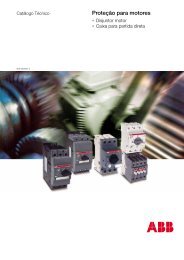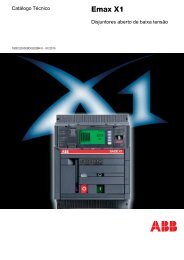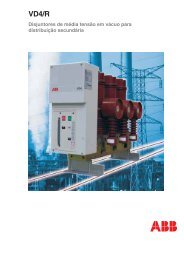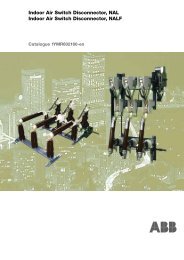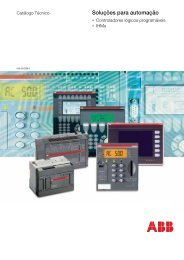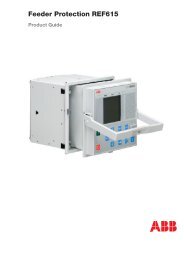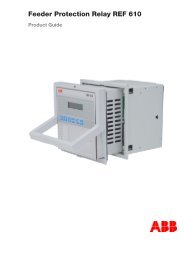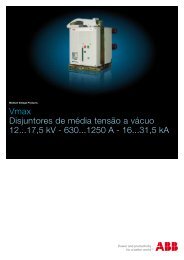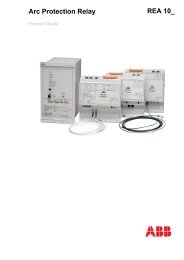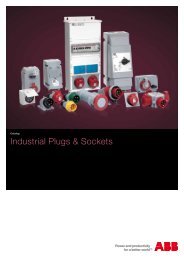Electricity meters for modular enclosures and DIN rail
Electricity meters for modular enclosures and DIN rail
Electricity meters for modular enclosures and DIN rail
You also want an ePaper? Increase the reach of your titles
YUMPU automatically turns print PDFs into web optimized ePapers that Google loves.
Joint residential sourcingDirect <strong>and</strong> indirect savings plus a boost<strong>for</strong> the environmentUnlike applications where a separate billing meter isinstalled in every apartment or residence <strong>for</strong> individualbilling, joint residential sourcing involves having onecentral ‘billing’ meter.The housing association, condominium or equivalent thenacts as a single electricity subscriber <strong>and</strong> redistributesits costs amongst its members according to their actualconsumption. The latter is measured by a simple<strong>DIN</strong>-meter (or additional billing meter) in each apartment.This is often referred to as sub-metering.The attractions are many. Direct savings are won viareduced network charges, i.e. electricity is supplied to justone subscriber (the association) instead of a subscriber inevery apartment. The association then has a much better bargainingposition when negotiating prices with energy companies,which should lead to lower prices <strong>for</strong> all.Reliable <strong>and</strong> easy to implementJoint residential sourcing is easy to implement. Usually no<strong>for</strong>mal approval is required, but this may vary from country tocountry depending on local rules <strong>and</strong> legislation. ABB electricity<strong>meters</strong> help alleviate common concerns as they areapproved <strong>for</strong> billing applications within the EU/EEC, i.e. theyare MID-approved (see page 46). Members can thus trusttheir use in joint residential sourcing.Simple installation in st<strong>and</strong>ard <strong>enclosures</strong>The <strong>DIN</strong> <strong>meters</strong> usually used to distribute costs between apartmentsare simple to install. Small enough to fit in st<strong>and</strong>ard <strong>DIN</strong><strong>enclosures</strong>, they require no special housing or rebuilding work.The data they generate are normally collected by via pulse orserial readings transmitted continuously to a central unit (thelatter also allow access to additional data). At the simplestlevel, the <strong>meters</strong> can be read manually.Sub-metering brings on energy awarenessExperience shows that occupiers save up to 30% on electricitybills when they can see their own consumption. This isnot surprising. When individual occupiers get a clear picturethat relates electricity use to activity, they know exactly wheresavings can be made.Cost savings also benefit the environmentKnowing how <strong>and</strong> where electricity costs arise will also helpimprove the environment by cutting the need <strong>for</strong> ‘unnecessary’electrical energy production. A specific example is the multitudeof devices with ‘st<strong>and</strong>-by’ consumption, i.e. connected tothe mains supply but not in use. These include trans<strong>for</strong>mers <strong>for</strong>mobile phone chargers, TVs <strong>and</strong> computers, halogen lamps, etc.It’s not uncommon that such devices in a single homecontinuously consume up to 100 W or more. This is wasteful<strong>and</strong> costly. Once again, individual measurement withcontinuous readings (especially if they are web-based) makesthe problem visible – <strong>and</strong> easier to remedy.Joint residential sourcing offers clearcost-saving opportunities <strong>for</strong> housingassociations <strong>and</strong> their members,at the same time as it benefits theenvironment.2CMC480022C0003| <strong>Electricity</strong> <strong>meters</strong> 7



